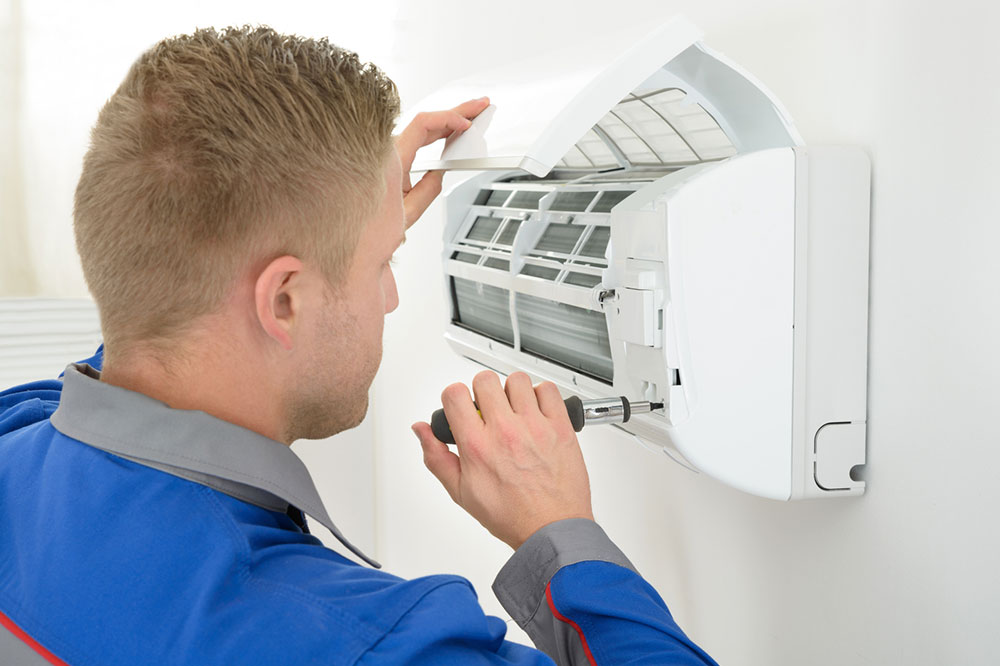8 common AC installation mistakes and how to avoid them

Usually, manufacturers build their air conditioners to be durable to keep the appliance working for many years. But, to ensure an air conditioner’s longevity and optimal functioning, it is important to install it properly. One way to do this is to learn about the mistakes people make while fixing their air conditioners for the first time. So, here are some of the common AC installation mistakes and how to avoid them.
Not doing enough research about what is required
Air-conditioners are big-ticket purchases for many households. Therefore, it is essential to put a lot of time into figuring out which AC will work best. One needs to do adequate research to install a unit that meets all the requirements. For example, a crucial requirement is the size of the air conditioner. Installing the incorrect size will mean the AC won’t be able to cool the home effectively. Its capacity to function will be strained, leading to damage.
Purchasing an air conditioning unit of the wrong size
One needs to install an air conditioning unit, depending on the size of the room. If the AC is too big, it will lead to shorter cooling cycles. Or if it is too small, the AC will be overworked. To avoid this, one can use a British Thermal Unit (BTU) calculator. The BTU is a unit of heating that indicates the amount of energy an AC requires to cool a space in an hour. Simply enter the area of the room in the calculator to know the BTUs that will be required. Then, go ahead and install an AC that has this number of BTUs.
Sealing the ductwork improperly
Another common AC mistake is not sealing the ductwork properly. This will lead to the AC unit working inefficiently. To prevent this, it is important to pay close attention to the ductwork sealing, and it must be sealed securely without any gaps. Even if there are minor gaps, it can severely deteriorate the air conditioner’s cooling capacity, as air will start to seep out. In case there are gaps, make sure that a high-quality permanent sealer is used to close them off.
Ignoring the drainage
Failing to put in place a proper drainage mechanism for the AC unit is another common blunder that many commit while installing the appliance. When the drainage is not done properly, moisture will not be eliminated from the AC unit. Over time, this will lead to many issues and damage to the unit. The presence of constant moisture will increase the risk of mold growth, which can cause a lot of health issues. In addition, there is the risk of severe water damage as well.
Adding excess refrigerant
Once the air conditioning unit has been fixed, the next step in the installation process is adding the refrigerant. This is a key element that ensures that the air in the room is sufficiently cooled. However, a common mistake is putting in too much of the refrigerant. This will cause damage to the system and result in malfunction, which can lead to heavy repair expenses. Therefore, it is important to read the manual to understand the exact amount of refrigerant that must be poured in.
Not placing the thermostat properly
The location of the thermostat is important to guarantee the air conditioning works efficiently. If the thermostat is placed in the wrong position, it will put a strain on the functioning of the AC. This will cause irreparable damage over time, affecting the unit’s life. So, it is important to ensure that the thermostat is placed in the right position. One of the perfect spots to place the thermostat is anywhere away from direct sun exposure.
Incorrectly placing the condenser
The condenser is a component of an air conditioner that has a crucial function in the overall working of the unit. If it is incorrectly placed, it will make the air conditioner work harder. This raises the electricity bill and may lead to additional expenses if the AC gets damaged. Thus, placing the condenser properly will ensure cost savings as well as the longevity of the appliance. An ideal location for a condenser is a shaded spot that isn’t exposed directly to sunlight.
Neglecting proper insulation
Another common mistake to avoid when installing an AC unit is understanding the importance of correct insulation. Neglecting proper insulation in the room for the AC will affect the optimal functioning of the appliance. If the insulation is insufficient due to gaps in the windows, doors, and walls, it can lead to air leaks. The cooled air from the AC will escape, and the warm air will seep through the gaps. Due to this, the AC will not be able to function optimally, as it will constantly attempt to maintain the desired temperature inside the room. This will lead to higher energy consumption and, thereby, higher electricity bills.
Therefore, before installing the AC, it is important to inspect the room where the appliance will be placed. Check for gaps that have the potential to result in air leakage. Such gaps should be properly insulated and sealed off if they are found.









